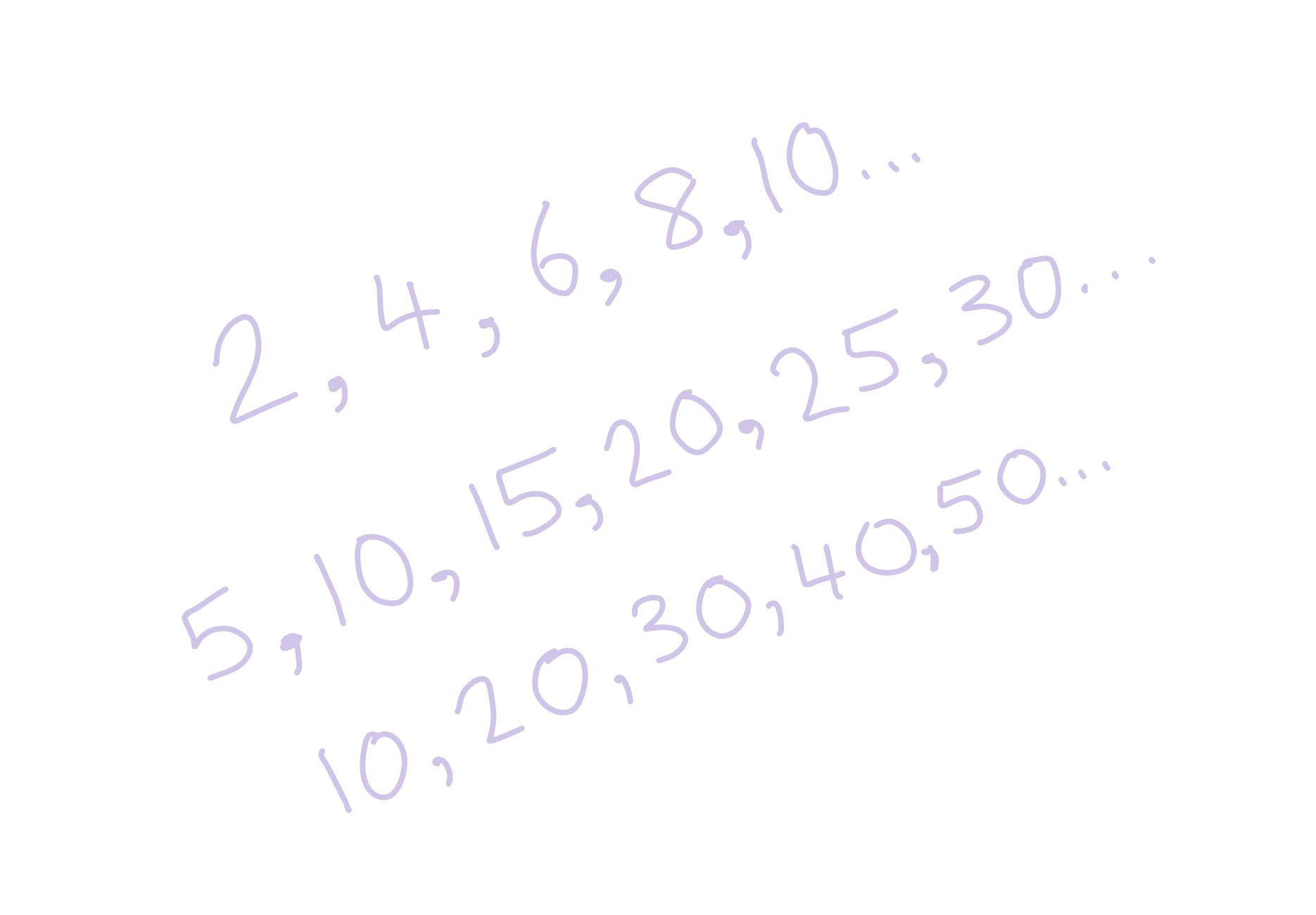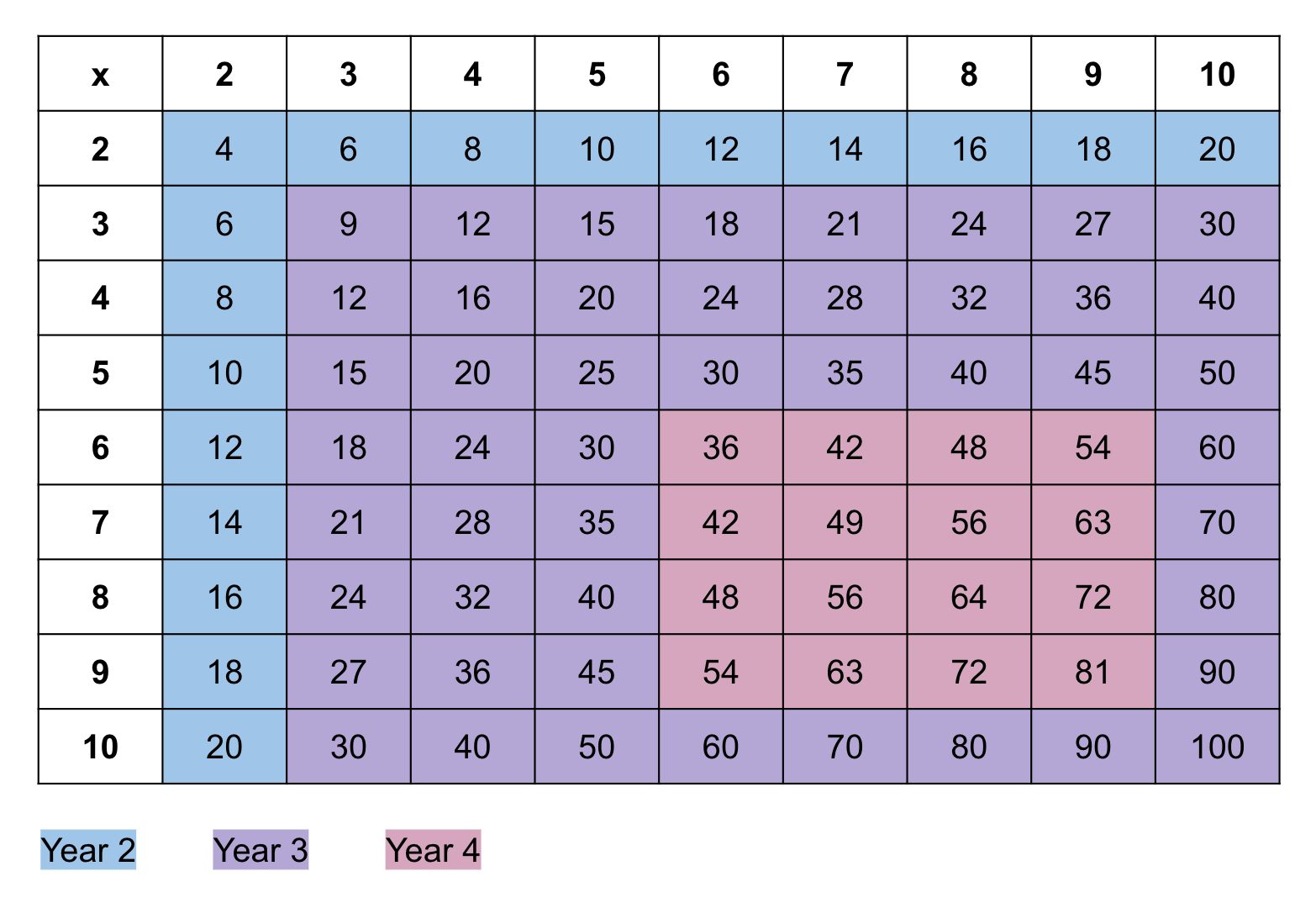The Best Order to Learn Times Tables
What times tables should my child know for their age?
How can I help my child learn their times tables?
If you find yourself asking these questions, then you’ve come to the right place!
Are you wanting to help your child learn their multiplication facts? Sometimes just knowing where to begin can be the hard part.
We’ve put together a simple guide to help you understand what grade different multiplication facts are taught at school, as well as the best order for your child to learn their times tables.
You’ll see we’ve included some handy hints to help your child master their multiplication facts!
Your child is typically expected to be able to recall multiplication facts up to 10 x 10 by the end of year 4.
Here’s a guide to how to get them there, which is the same order they’re taught at school.
Year 1
Skip counting - 2s, 5s, 10s
Year 2
Multiplication facts for 2s (and related division facts)
Year 3
Multiplication facts for 3, 4, 5, 10 (and related division facts)
Year 4
Multiplication facts for 6, 7, 8, 9 (related division facts)
Children start extending and applying facts to develop efficient mental strategies so they can compute larger numbers without a calculator.
Year 4 onwards
Children start applying their multiplication and division facts to focus on more complex mathematical concepts and problem-solving skills.
Skip counting
It’s an important building block for multiplication. You can use number charts, songs, rhymes and stories to help your child establish skip counting sequences in a fun way.
Here’s a great way to visually keep track of what multiplication facts your child will be learning at school. Notice that by Year 4, they’ve already covered most of them!
Our top tips
With Year 3 facts, we recommend starting with multiplication facts for 5 and 10, as these are easier to learn. Then move onto the 3s and 4s facts.
Take time to develop an understanding and then memory of each multiplication table rather than skipping to recall; this comes later.
Encourage your child to use known facts to help learn new ones. For example, when learning the 4s multiplication facts, use the 2s to help. Using arrays and counters is helpful for modelling these strategies.
6 x 4 = ? Think: 6 x 2 = 12, so if I double this I’ll get 24. 6 x 4 = 24
5 x 8 = ? Think: 5 x 4 = 28, so if I double this I’ll get 28. 7 x 4 = 28
Fact families
Here’s a fun way to help your child learn their related division facts.
Tutoring that fits you, not the other way round
Online tutoring is the go-to for parents these days, due to its incredible flexibility and higher levels of engagement for the child.
Conclusion
If you’re child is struggling to grasp their multiplication and division facts, it’s better to get help earlier rather than later.
Speak to your child’s teacher and ask for strategies they can share with you.
Tutoring is a great way to give your child a boost with understanding multiplication. The stress of worrying about your child’s learning will be washed away, and the joy of seeing your child flourish and start to love learning, will put your mind at ease.
At Attain Education, we are always willing to lend an ear to parents. We have a genuine passion for providing expert tutoring for primary-aged children. If you’re considering getting a tutor for your child, why not book a call and have a chat with us. We’d love to know more about your child and their unique learning needs, and discuss how we can help.





